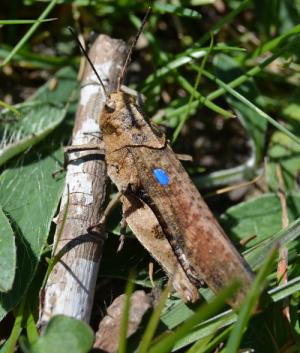Methods
Mark-recapture

I intensively studied one population in Östergötland for the entire adult season, from mid-July to mid-October, capturing and marking individuals with unique ID numbers. I used the Jolly-Seber and Cormack-Jolly-Seber models, that assume that the population is open, to estimate the size of the population throughout the season, as well as the probability of individuals to survive from visit to the next and the probability of marked individuals getting captured at each visit.
Simulated monitoring
This mark recapture study allowed me to get a good idea of how many individuals were in my study area. However, authorities don't have enough resources to spend three months monitoring just one population, and populations are usually visited only two to three times.
I simulated real monitoring scenarios by downsampling my main data set, picking out two or three visits at a time. I picked out all possible combinations of two visits, as well as all combinations of three visits when the time interval between the visits was equal.
I then looked at how estimates based on so few visits compare to my best estimates and how this estimate accuracy varied depending on the number of days between visits and recapture rates.
Habitat characteristics
I also marked grasshopper positions using a GPS-reciever. I split the main study area into 10 x 10 m cells, in which I quantified the following habitat characteristics, which I suspected could be of importance:
- Number of small junipers, under 170 cm
- Number of large junipers, over 170 cm
- Area covered by trees
- Area covered by felled trees
- Area covered by bracken stands
- Area of stones visible from orthophotos
- Mean aspect
- Mean slope
I then tested how these different factors influenced the number of observations of male individuals per kilometer I've walked searching in each cell, using a generalised linear model.
Responsible for this page:
Director of undergraduate studies Biology
Last updated:
06/01/18
